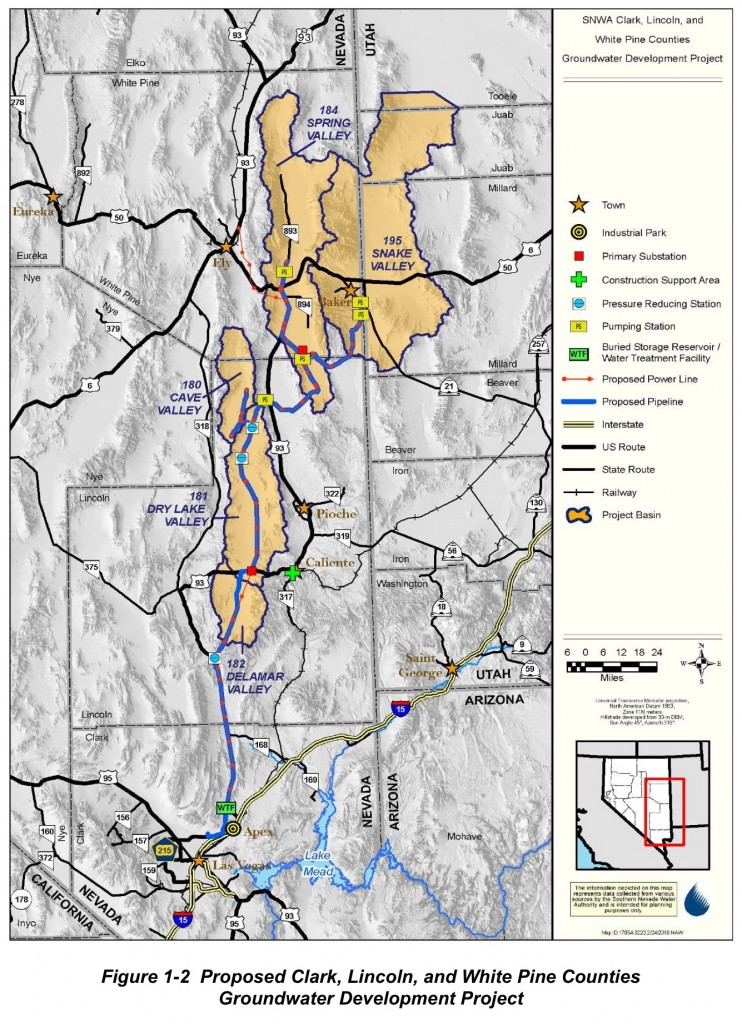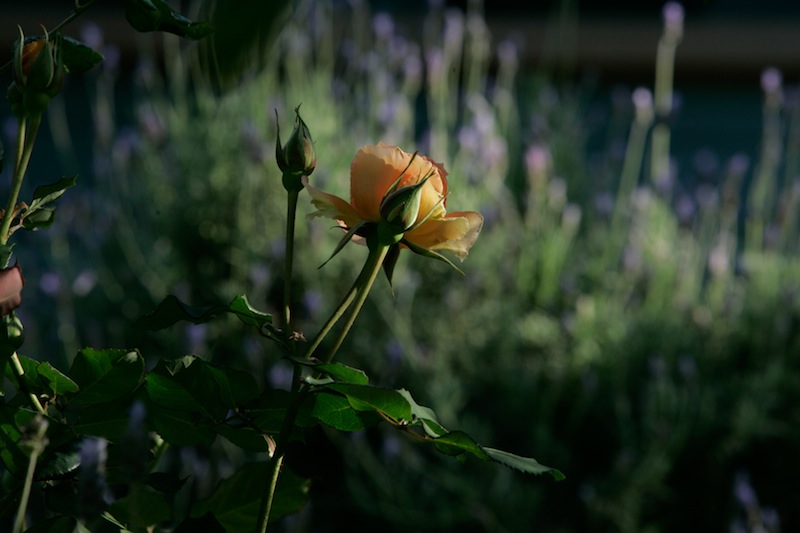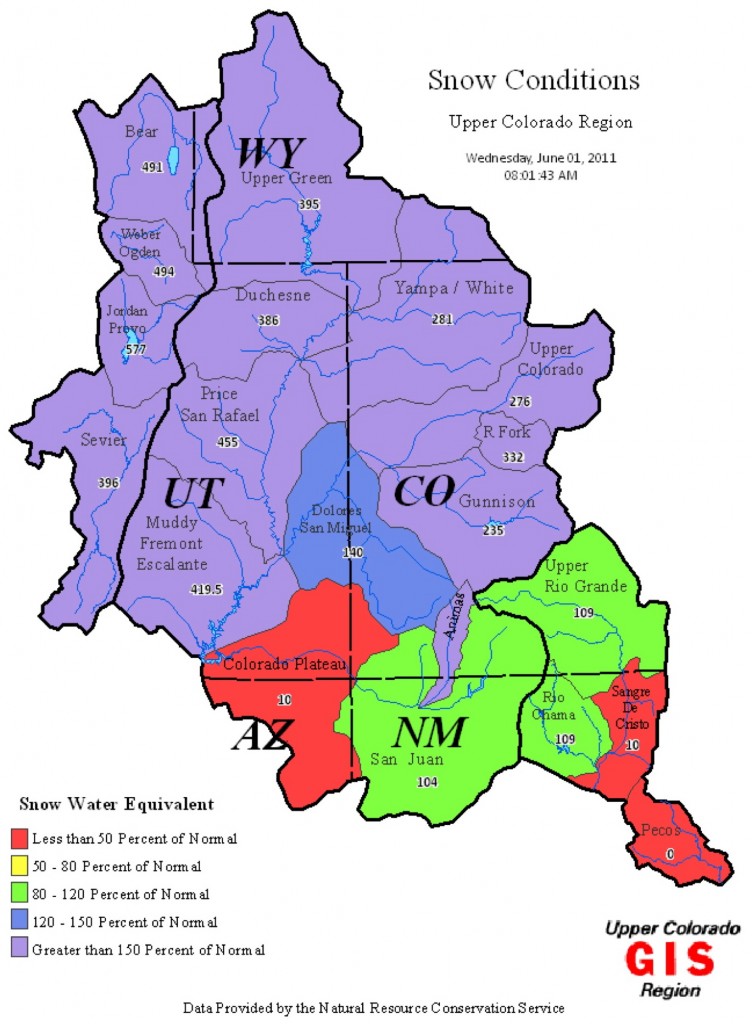Vegas case for water surveyed
Posted on | June 10, 2011 | 1 Comment
 Ladies and gentlemen, prepare your reading glasses. Today the Bureau of Land Management is expected to publish a long-delayed draft environmental impact statement scrutinizing the impact to federal land of a proposed Las Vegas pipeline into the Great Basin. Long pipe (306 miles), long document (it’s expected to run more than 1,200 pages). An extended comment period of 90 days is expected. Click here for background, here for a link to the federal register. The comment period will start the day that a notice of publication of the EIS appears in the register.
Ladies and gentlemen, prepare your reading glasses. Today the Bureau of Land Management is expected to publish a long-delayed draft environmental impact statement scrutinizing the impact to federal land of a proposed Las Vegas pipeline into the Great Basin. Long pipe (306 miles), long document (it’s expected to run more than 1,200 pages). An extended comment period of 90 days is expected. Click here for background, here for a link to the federal register. The comment period will start the day that a notice of publication of the EIS appears in the register.
Shortly after the federal comment period ends over access to public land for the Vegas pipeline, Nevada’s State Engineer will begin omnibus hearings to decide whether or not to award water to fill it. Previous awards by the former state engineer were thrown out by two courts, citing due process violations and unsound assessments of available groundwater reserves. Click here for the latest schedule for the hearings, which will begin in September. Among new protestants is the Long Now Foundation.
Click here for the project description from the Las Vegas-based Southern Nevada Water Authority, and here for the website of the Great Basin Water Network, a group mobilized to fight the Vegas plan.
*Update: A downloadable version of the EIS has not yet been posted on the BLM website. The BLM explains that it’s a massive job involving more than 100 downloads. Another hydrologist warns that it is “a hard drive buster.” For those not near to public reading rooms carrying hard copies in Nevada, it is better perhaps to request a disk version from the BLM. There are links to do this on the Federal Register announcement.
Tags: Bureau of Land Management > chance of rain > Southern Nevada Water Authority > State Engineer of Nevada
The Dry Garden: Smell the roses
Posted on | June 3, 2011 | No Comments
 This may not be the time to plant a rose, but as a long rose season concludes its spring flush, it is an ideal moment to study the varieties around town, then consider which ones you like and what they might do for your garden.
This may not be the time to plant a rose, but as a long rose season concludes its spring flush, it is an ideal moment to study the varieties around town, then consider which ones you like and what they might do for your garden.
How such hardy plants spawned the modern rose care industry will one day make a fabulous subject for a business writer. A 2004 Home cover story titled “Rethinking the Rose” challenged the idea that roses need pampering, if stumping their branches in winter, drenching their roots in summer, dusting the foliage with fungicides and filling their arteries with systemic pesticides can be called pampering.
What is worth picking up on here and now is that few notionally water-loving plants transition quite so seamlessly into the Mediterranean-climate garden.
Click here to keep reading about roses in the Dry Garden in the Los Angeles Times. If you have time, please also check out Rethinking the Rose, which takes on, point by point, every supposed need of roses as promoted by fertilizer and pesticide companies.
Tags: chance of rain > Emily Green > Los Angeles Times > Mediterranean gardening
High good, low bad: Mead in May 2011
Posted on | June 1, 2011 | No Comments
 Lake Mead’s rise by two feet in May presages a total rise of 32 feet by the end of February, 2012, reported the Las Vegas Review-Journal several weeks ago. Last night at midnight, the elevation of the largest storage reservoir in the US was 1,097.89, leaving another 30 feet due for release from Lake Powell upstream. The federal Bureau of Reclamation graphic, left, shows how much water sits in reserve as snowpack in the upper Colorado region.
Lake Mead’s rise by two feet in May presages a total rise of 32 feet by the end of February, 2012, reported the Las Vegas Review-Journal several weeks ago. Last night at midnight, the elevation of the largest storage reservoir in the US was 1,097.89, leaving another 30 feet due for release from Lake Powell upstream. The federal Bureau of Reclamation graphic, left, shows how much water sits in reserve as snowpack in the upper Colorado region.
As the snow melts and the water makes its way through the dam system upstream, the 2010-11 water year on the Colorado will push Lake Mead steadily upward from the 1,075 elevation, at which point shortages would have been declared for Arizona and Nevada. For California to be hit by shortages, the reservoir would have to drop further because of an antique priority rights system governing the river.
While Las Vegas celebrated a near miss with shortages, (last November it was within 7 feet of the trigger), last week the editorial page in the Los Angeles Times urged water managers to greet the good water year conservatively as the Los Angeles City council entertains relaxing lawn watering restrictions.
Click here for Reclamation records of the elevations of Lake Mead going back to its impoundment by Hoover Dam.
Helianthus annuus, now and then
Posted on | May 30, 2011 | No Comments

 SUNFLOWERS are the true American beauty. They have it all: stamina, fast growth, architecture, fecundity, attitude and, above all, color. The proportions twixt stem and head are so sweetly comical that all it takes is the sight of a sunflower display at Trader Joe’s to defuse the rage that brews daily in its parking lots.
SUNFLOWERS are the true American beauty. They have it all: stamina, fast growth, architecture, fecundity, attitude and, above all, color. The proportions twixt stem and head are so sweetly comical that all it takes is the sight of a sunflower display at Trader Joe’s to defuse the rage that brews daily in its parking lots.
In the wild, sunflowers are so stunning that driving down the 110 past Dodger Stadium, it is hard not to crash as one catches sight of a freeway verge studded with gold. As L.A.’s hillsides turn brown in late summer heat, somehow wild sunflowers still glow from the brush.
Click here to keep reading about how the only thing different from the sunflowers that you buy in Trader Joe’s and the wild type that you see to the freeway (and in the photos, left), is 4,000 years of cultivation. It’s not a recent Dry Garden column, that’s just below about Stephan Ingram’s beautiful book on Cacti, Agaves and Yuccas. Rather, this is an old, frankly lusty long article from 2006, written when my column was headed “Greening,” which was all very nice ego-wise, but was also the name of a citrus blight.
The reason to link this old favorite? To celebrate the Memorial Day flowering of the first of this year’s sunflowers in my new garden, the wild variety, sown with seed from S & S Seeds in Carpinteria, California. As you can see from only two pictures, even from wild “un-improved” Helianthus annuus seed, there are clear indicators of the diversity that turned this into what might be the world’s most famous and beloved flower.
Tags: chance of rain > Emily Green > helianthus annuus > Los Angeles Times
The Dry Garden: Hillside wonder
Posted on | May 27, 2011 | No Comments

Illustration: E. O. Murman / Margo Murman, from "Cacti, Agaves, and Yuccas of California and Nevada"
This is the time of year when even those hostile to the idea of water rationing in the garden have their heads turned by what nature has created without sprinklers. Rising from the untended hills of Southern California are spires of ethereal white flowers. They’re so big that you can see them from hundreds of feet away. If they’re backlit, double that distance.
There’s no right name for the plant that produces these arresting plumes. Common terms vary from Quixote yucca to Spanish bayonet to even the reverent Our Lord’s Candle. Science has no straight answer either. As genetic analysis continues to shake up traditional taxonomy, the botanical name is slipping from Yucca whipplei to Hesperoyucca whipplei.
Click here to keep reading about chaparral yucca in the Los Angeles Times and the wonderful book, “Cacti, Agaves, and Yuccas of California and Nevada” by Stephen Ingram.
« go back — keep looking »

